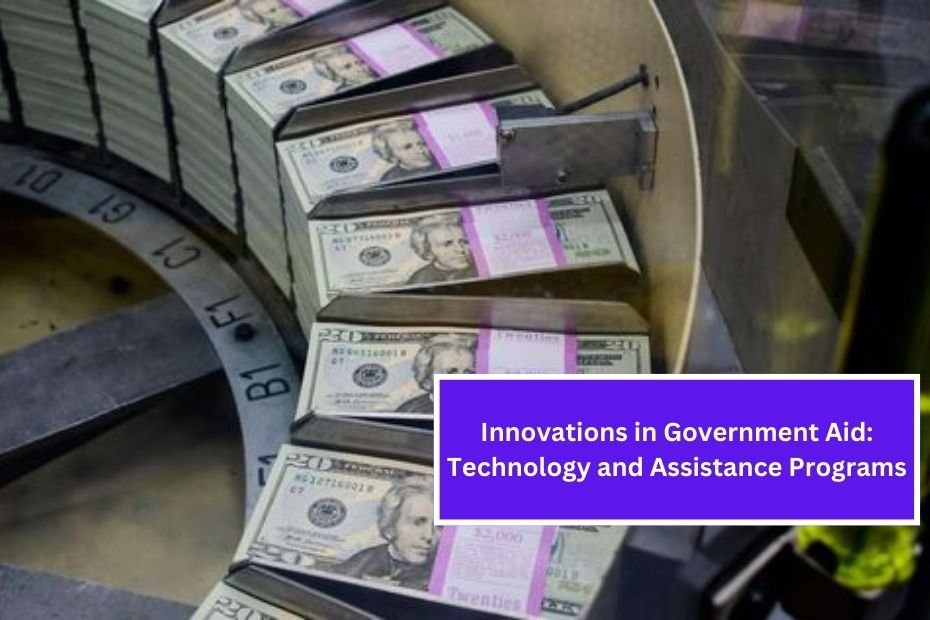In today’s fast-paced world, technology plays a significant role in how government aid is delivered to people in need. With the help of new tools and innovative programs, governments are working to make assistance more efficient, accessible, and user-friendly. This article will explore various innovations in government aid, focusing on how technology enhances assistance programs and helps communities thrive.
Introduction
Government aid programs are designed to provide support to individuals and families facing challenges such as poverty, unemployment, and health issues. These programs can include food assistance, housing support, unemployment benefits, and healthcare services. However, traditional methods of delivering aid can be slow, complicated, and often leave people without the help they need.
Recent advancements in technology have opened up new opportunities for improving these programs. From mobile applications to data analytics, innovations are transforming how governments deliver assistance, making it easier for people to access the support they need.
1. Mobile Applications for Assistance
Making Access Easier
One of the most significant innovations in government aid is the development of mobile applications. These apps allow individuals to apply for assistance, check their eligibility, and receive benefits directly on their smartphones. This convenience is especially important for people who may not have easy access to computers or transportation.
Example: SNAP Benefits
The Supplemental Nutrition Assistance Program (SNAP), which provides food assistance to low-income individuals and families, has seen the introduction of mobile applications in many states. These apps enable users to check their benefit balance, find nearby grocery stores that accept SNAP, and even apply for benefits. This streamlined process reduces barriers and helps families access food more easily.
Benefits of Mobile Apps
Mobile applications enhance accessibility for everyone, including those with disabilities or limited mobility. They also provide real-time information, allowing users to track their applications and benefits without having to wait for paperwork or phone calls.
2. Online Portals and E-Government Services
The Shift to Digital
Many government agencies are moving toward online portals to provide services and assistance. These e-government platforms allow individuals to apply for benefits, submit documents, and receive notifications online, reducing the need for in-person visits.
Example: Healthcare Enrollment
During the COVID-19 pandemic, many states expanded their online enrollment options for healthcare programs like Medicaid. Individuals could complete applications from the safety of their homes, ensuring that those in need could still access critical healthcare services without risking their health.
Advantages of Online Services
Online portals simplify the application process and make it easier for individuals to understand their options. They often include user-friendly interfaces with step-by-step guidance, which can help reduce confusion. Additionally, e-government services can process applications faster than traditional methods, allowing individuals to receive help more quickly.
3. Data Analytics for Targeted Assistance
Understanding Community Needs
Governments are increasingly using data analytics to identify community needs and improve assistance programs. By analyzing data on poverty rates, unemployment, and health outcomes, agencies can tailor their programs to address specific issues within communities.
Example: Predictive Analytics
Some states use predictive analytics to forecast which individuals might need assistance in the future. By examining trends and patterns, agencies can proactively reach out to at-risk populations before they face crises. This approach helps to reduce the number of people who fall into poverty or require emergency aid.
Benefits of Data-Driven Decisions
Data analytics allows governments to allocate resources more efficiently. By understanding which communities need help the most, they can focus their efforts where they will have the greatest impact. This targeted approach leads to better outcomes for individuals and families.
4. Virtual Assistance and Chatbots
24/7 Support
With the rise of artificial intelligence, many government agencies are implementing virtual assistants and chatbots to provide support. These tools can answer questions, guide users through applications, and help them find the resources they need at any time of day.
Example: Chatbots for Benefits Information
Some states have introduced chatbots on their websites to assist individuals with questions about various aid programs. These chatbots can provide instant responses, reducing wait times and improving the user experience. They can also guide users to the right services based on their needs.
Advantages of Virtual Assistance
Virtual assistants provide a low-pressure environment for individuals seeking help. They can ask questions and get information without feeling embarrassed or overwhelmed. Additionally, chatbots can handle many inquiries simultaneously, freeing up human staff to focus on more complex cases.
5. Improved Communication and Outreach
Connecting with Communities
Innovations in technology are also helping governments improve their communication and outreach efforts. Social media platforms, mobile alerts, and community apps are being used to keep individuals informed about available assistance programs and changes in services.
Example: Social Media Campaigns
Many local governments run social media campaigns to promote awareness of available aid programs. These campaigns can share success stories, important deadlines, and application tips, reaching a broader audience than traditional methods.
Benefits of Enhanced Communication
Improved communication strategies ensure that people are aware of the resources available to them. This awareness can lead to higher participation rates in assistance programs, ultimately helping more individuals and families in need.
6. Partnerships with Nonprofits and Tech Companies
Collaborative Efforts
Many governments are partnering with nonprofits and technology companies to enhance their assistance programs. These collaborations can lead to the development of new tools and services that better meet community needs.
Example: Tech Solutions for Homelessness
Some cities have partnered with tech companies to develop applications that connect homeless individuals with available services, such as shelters, food resources, and job training programs. These apps can provide real-time information about available resources and help individuals navigate their options.
Advantages of Collaborative Innovations
By working together, governments, nonprofits, and tech companies can leverage each other’s strengths. Nonprofits often have deep community ties and understand local needs, while tech companies bring expertise in developing innovative solutions. This collaboration can lead to more effective and comprehensive assistance programs.
7. Case Management Software
Streamlining Services
Case management software is becoming increasingly popular among government agencies that provide social services. This software allows caseworkers to track client information, manage applications, and coordinate services more efficiently.
Example: Integrated Service Models
Some states are implementing integrated service models that use case management software to provide a holistic view of an individual’s needs. This approach allows caseworkers to see all the assistance programs a client may qualify for, ensuring they receive comprehensive support.
Benefits of Case Management Tools
These tools enhance communication among caseworkers, clients, and service providers. They can help reduce duplication of services and ensure that individuals receive the right assistance at the right time. This efficiency can lead to better outcomes for those seeking help.
8. Digital Identity Verification
Ensuring Security
As government services move online, ensuring the security of personal information is crucial. Digital identity verification technologies help protect individuals’ data while allowing them to access services more easily.
Example: Secure Enrollment Processes
Many government programs are implementing secure online enrollment processes that require users to verify their identity through various means, such as biometric data or two-factor authentication. This added layer of security helps prevent fraud and ensures that benefits reach the intended recipients.
Importance of Security in Government Aid
Protecting personal information is essential for maintaining trust in government programs. When individuals feel secure in their interactions with these services, they are more likely to seek assistance when needed.
Conclusion
Innovations in technology are transforming government aid programs, making them more efficient, accessible, and user-friendly. From mobile applications to data analytics, these advancements are helping to improve the delivery of assistance to those who need it most.
As governments continue to embrace technology, it is essential to prioritize inclusivity and ensure that all individuals have access to these resources. By harnessing the power of innovation, we can create a more supportive and responsive system that meets the needs of communities across the nation.
Final Thoughts
The ongoing evolution of government aid programs through technology offers great promise for the future. By staying informed about these innovations, individuals can better understand how to access the support they need. Whether through mobile apps, online services, or community partnerships, the goal remains the same: to ensure that everyone has the opportunity to thrive.

